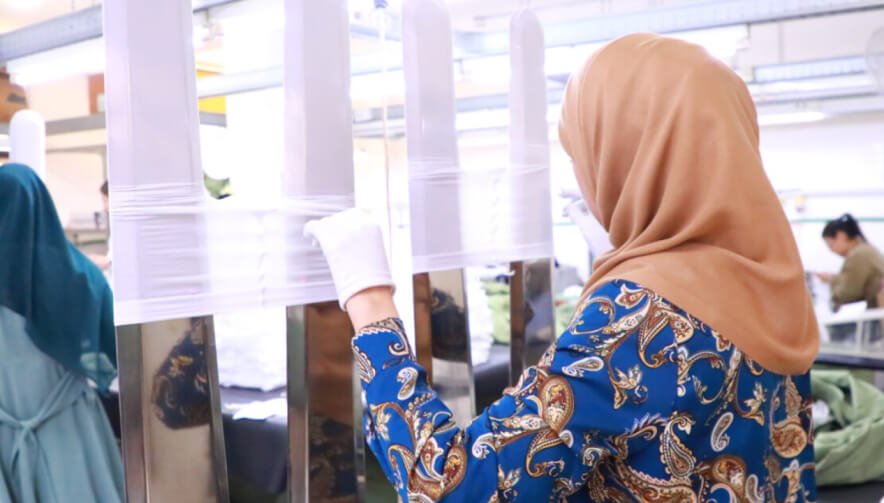When the Syrian crisis erupted in 2011, Issam resided in Darayya, a suburb of Damascus in Syria. In response to the escalating situation, he and his family were obliged to seek refuge in Jordan. “Becoming a refugee in a new community was an unimaginable experience,” said Issam. Fortunately, they were familiar with the language and culture of the region, which eased their transition into the new environment.
A few months after arriving in Amman, Issam knew that he needed to provide for his wife and children as well as keep himself busy, so he returned to his profession as a tailor. “Rather than sit without a job and dwell on my lost home, I found it useful to roll my sleeves up and get to work in the profession I knew best,” he says.
Issam scraped together all of his savings and borrowed money from friends and relatives. Put together, he had enough funds to open his own small sewing factory in Downtown Amman called Al-Hour Al-Eeen Factory. Starting with just three sewing machines, Issam’s vision was to not only establish a business but also to contribute to the broader community by employing three Syrian refugees.

Within a short span of time, Issam had attracted numerous customers and forged valuable connections with traders, due to the remarkable quality and pricing of his products. In 2016, as demand surged, he made a pivotal choice to expand his factory operations. The workforce grew from three employees to a team of twelve, and his goals extended to include women’s employability and empowerment, by offering flexible working hours for Syrian refugee women.
With technical support from SPARK, through its partner International Group for Training (IGIT), under the Skills Training Education Programme (STEP), financed by The Islamic Development Bank and the Abdulla Al Ghurair Foundation, Issam underwent a comprehensive training in various fields. He participated in courses covering accounting, strategic planning, social media marketing, and financing.
Equipped with this newfound knowledge, Issam expanded his business significantly. Currently, he employs over 25 workers to manage the machines, with an additional five employees working in administration and six staff members in the showrooms. After a decade of dedication to his company, the total number of employees has now reached 35.
